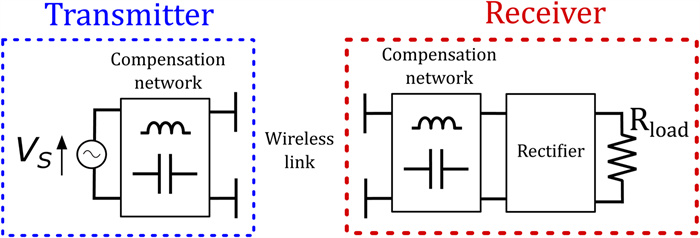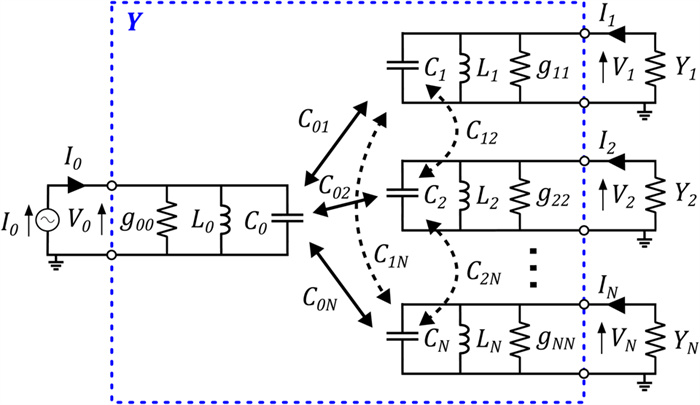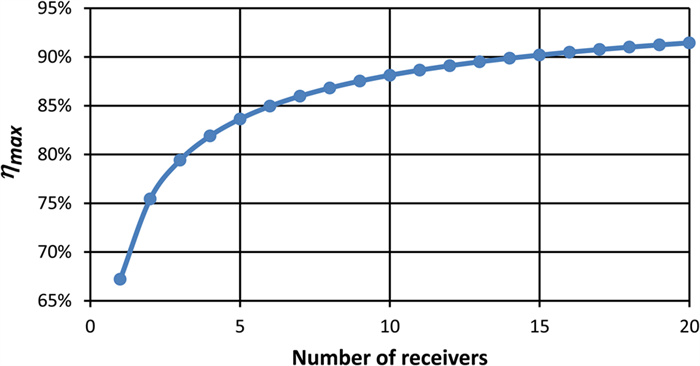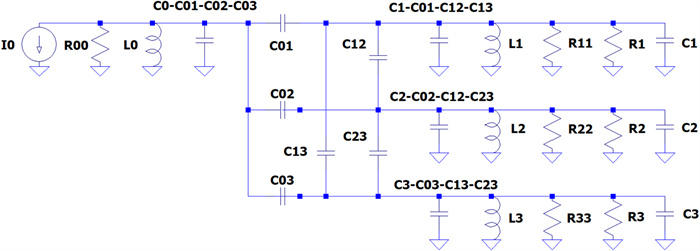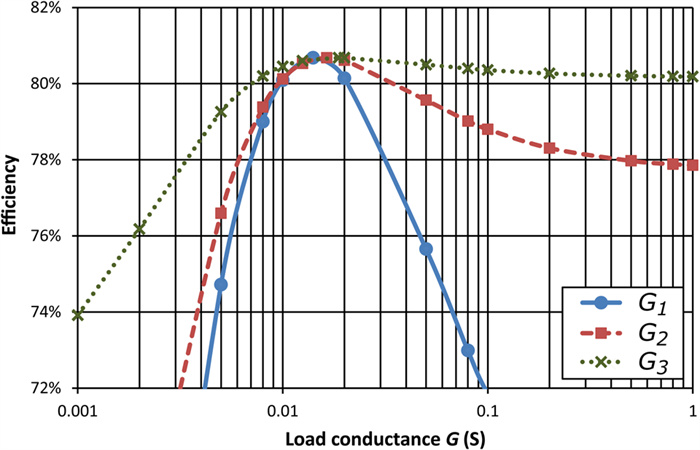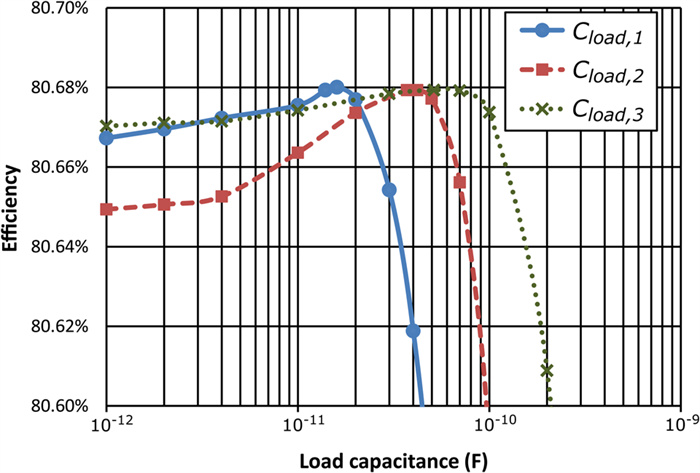Maximum efficiency solution for capacitive wireless power transfer with N receivers
-
1.
Odisee University College of Applied Sciences, Ghent, Belgium
-
2.
Department of Engineering, University of Perugia, Perugia, Italy
-
3.
Department of Electrical, Electronic and Information Engineering Guglielmo Marconi, University of Bologna, Bologna, Italy
More Information
-
Author Bio:
 Ben Minnaert
Ben Minnaert obtained his PhD in Engineering in 2007 at Ghent University, Belgium. He authored or co-authored more than 50 papers on international journals and conferences. In 2018, he obtained a permanent position as researcher and lecturer at the University College Odisee, KU Leuven Association. His main research interest is the modelling of energy systems, including energy harvesting, photovoltaic solar cells, and wireless power transfer. Recently, he has developed nearfield wireless power transfer systems for non-static applications. His research activities are dedicated to embedded systems, wireless sensor networks, IoTapplications, and (inductive and capacitive) wireless power transfer for multiple transmitters and receivers.
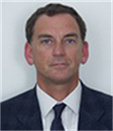
Mauro Mongiardo has served in the Technical Program Committee of the IEEE International Microwave Symposium from 1992. From 1994, he is a member of the Editorial Board of the
IEEE Transactions on Microwave Theory and Techniques. During the years 2008–2010, he has been an Associate Editor of the
IEEE Transactions on Microwave Theory and Techniques. He is an author or co-author of over 200 papers and articles in the fields of microwave components, microwave CAD, and antennas. He is the co-author of the books
Open Electromagnetic Waveguides (IEE, 1997) and
Electromagnetic Field Computation by Network Methods (Springer, 2009).
 Alessandra Costanzo
Alessandra Costanzo (A'99–M'02–SM'13) is full professor at the University of Bologna, Italy. Her research activities are dedicated to CAD algorithms for multi-domain co-design and modeling of active nonlinear microwave/RF circuits. Recently she has proposed novel solutions for energy autonomous RF systems based on the wireless power transmission, adopting both far-field and near-field solutions, for several power levels and operating frequencies. She has authored more than 240 scientific publications on peer-reviewed international journals and conferences and several chapter books. Dr. Costanzo is a co-founder of the EU COST Action IC1301 WiPE Wireless Power Transfer for Sustainable Electronics, where she chaired WG1: Far-Field Wireless Power Transfer. She is pastchair of the MTT-26 Committee on Wireless Energy Transfer and Conversion and a member of the MTT-24 Committee on RFID. Since 2016, she has been the Steering Committee Chair of the new
IEEE Journal of Radio Frequency Identification. She is the MTT-S representative and Distinguished Lecturer of the Council on Radio Frequency Identification (CRFID). She serves as an Associate Editor for the
IEEE Transactions on Microwave Theory And Techniques, the
Cambridge International Journal of Microwave and Wireless Technologies, and the
Cambridge International Journal of Wireless Power Transfer. She is IEEE senior member.
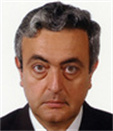 Franco Mastri
Franco Mastri received the laurea degree (with honors) in Electronic Engineering from the University of Bologna, Bologna, Italy, in 1985. In 1990, he become a Research Associate with the Istituto di Elettrotecnica, University of Bologna, and since 2005 he has been an Associate Professor of Electrotechnics with the Department of Electrical, Electronic, and Information Engineering "Guglielmo Marconi, " University of Bologna. His research interests include nonlinear-circuit simulation and design techniques, nonlinear RF device modeling, stability and noise analysis of nonlinear circuits, nonlinear/electromagnetic co-simulation of RF systems, and systems for wireless power transmission. He authored or co-authored four book chapters and about 140 papers on international journals and conferences
-
Abstract
Typical wireless power transfer (WPT) systems on the market charge only a single receiver at a time. However, it can be expected that the need will arise to charge multiple devices at once by a single transmitter. Unfortunately, adding extra receivers influences the system efficiency. By impedance matching, the loads of the system can be adjusted to maximize the efficiency, regardless of the number of receivers. In this work, we present the analytical solution for achieving maximum system efficiency with any number of receivers for capacitive WPT. Among others, we determine the optimal loads and the maximum system efficiency. We express the efficiency as a function of a single variable, the system kQ-product and demonstrate that load capacitors can be inserted to compensate for any cross-coupling between the receivers.
-
About this article
Cite this article
Minnaert B, Mongiardo M, Costanzo A, Mastri F. 2020. Maximum efficiency solution for capacitive wireless power transfer with N receivers. Wireless Power Transfer 7(1): 65-75 doi: 10.1017/wpt.2020.9
|
Minnaert B, Mongiardo M, Costanzo A, Mastri F. 2020. Maximum efficiency solution for capacitive wireless power transfer with N receivers. Wireless Power Transfer 7(1): 65-75 doi: 10.1017/wpt.2020.9
|


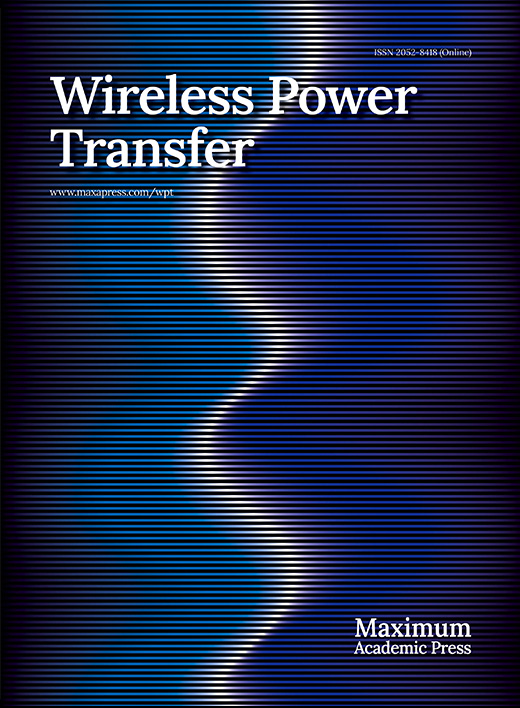






 Ben Minnaert obtained his PhD in Engineering in 2007 at Ghent University, Belgium. He authored or co-authored more than 50 papers on international journals and conferences. In 2018, he obtained a permanent position as researcher and lecturer at the University College Odisee, KU Leuven Association. His main research interest is the modelling of energy systems, including energy harvesting, photovoltaic solar cells, and wireless power transfer. Recently, he has developed nearfield wireless power transfer systems for non-static applications. His research activities are dedicated to embedded systems, wireless sensor networks, IoTapplications, and (inductive and capacitive) wireless power transfer for multiple transmitters and receivers.
Ben Minnaert obtained his PhD in Engineering in 2007 at Ghent University, Belgium. He authored or co-authored more than 50 papers on international journals and conferences. In 2018, he obtained a permanent position as researcher and lecturer at the University College Odisee, KU Leuven Association. His main research interest is the modelling of energy systems, including energy harvesting, photovoltaic solar cells, and wireless power transfer. Recently, he has developed nearfield wireless power transfer systems for non-static applications. His research activities are dedicated to embedded systems, wireless sensor networks, IoTapplications, and (inductive and capacitive) wireless power transfer for multiple transmitters and receivers.  Mauro Mongiardo has served in the Technical Program Committee of the IEEE International Microwave Symposium from 1992. From 1994, he is a member of the Editorial Board of the IEEE Transactions on Microwave Theory and Techniques. During the years 2008–2010, he has been an Associate Editor of the IEEE Transactions on Microwave Theory and Techniques. He is an author or co-author of over 200 papers and articles in the fields of microwave components, microwave CAD, and antennas. He is the co-author of the books Open Electromagnetic Waveguides (IEE, 1997) and Electromagnetic Field Computation by Network Methods (Springer, 2009).
Mauro Mongiardo has served in the Technical Program Committee of the IEEE International Microwave Symposium from 1992. From 1994, he is a member of the Editorial Board of the IEEE Transactions on Microwave Theory and Techniques. During the years 2008–2010, he has been an Associate Editor of the IEEE Transactions on Microwave Theory and Techniques. He is an author or co-author of over 200 papers and articles in the fields of microwave components, microwave CAD, and antennas. He is the co-author of the books Open Electromagnetic Waveguides (IEE, 1997) and Electromagnetic Field Computation by Network Methods (Springer, 2009).  Alessandra Costanzo (A'99–M'02–SM'13) is full professor at the University of Bologna, Italy. Her research activities are dedicated to CAD algorithms for multi-domain co-design and modeling of active nonlinear microwave/RF circuits. Recently she has proposed novel solutions for energy autonomous RF systems based on the wireless power transmission, adopting both far-field and near-field solutions, for several power levels and operating frequencies. She has authored more than 240 scientific publications on peer-reviewed international journals and conferences and several chapter books. Dr. Costanzo is a co-founder of the EU COST Action IC1301 WiPE Wireless Power Transfer for Sustainable Electronics, where she chaired WG1: Far-Field Wireless Power Transfer. She is pastchair of the MTT-26 Committee on Wireless Energy Transfer and Conversion and a member of the MTT-24 Committee on RFID. Since 2016, she has been the Steering Committee Chair of the new IEEE Journal of Radio Frequency Identification. She is the MTT-S representative and Distinguished Lecturer of the Council on Radio Frequency Identification (CRFID). She serves as an Associate Editor for the IEEE Transactions on Microwave Theory And Techniques, the Cambridge International Journal of Microwave and Wireless Technologies, and the Cambridge International Journal of Wireless Power Transfer. She is IEEE senior member.
Alessandra Costanzo (A'99–M'02–SM'13) is full professor at the University of Bologna, Italy. Her research activities are dedicated to CAD algorithms for multi-domain co-design and modeling of active nonlinear microwave/RF circuits. Recently she has proposed novel solutions for energy autonomous RF systems based on the wireless power transmission, adopting both far-field and near-field solutions, for several power levels and operating frequencies. She has authored more than 240 scientific publications on peer-reviewed international journals and conferences and several chapter books. Dr. Costanzo is a co-founder of the EU COST Action IC1301 WiPE Wireless Power Transfer for Sustainable Electronics, where she chaired WG1: Far-Field Wireless Power Transfer. She is pastchair of the MTT-26 Committee on Wireless Energy Transfer and Conversion and a member of the MTT-24 Committee on RFID. Since 2016, she has been the Steering Committee Chair of the new IEEE Journal of Radio Frequency Identification. She is the MTT-S representative and Distinguished Lecturer of the Council on Radio Frequency Identification (CRFID). She serves as an Associate Editor for the IEEE Transactions on Microwave Theory And Techniques, the Cambridge International Journal of Microwave and Wireless Technologies, and the Cambridge International Journal of Wireless Power Transfer. She is IEEE senior member.  Franco Mastri received the laurea degree (with honors) in Electronic Engineering from the University of Bologna, Bologna, Italy, in 1985. In 1990, he become a Research Associate with the Istituto di Elettrotecnica, University of Bologna, and since 2005 he has been an Associate Professor of Electrotechnics with the Department of Electrical, Electronic, and Information Engineering "Guglielmo Marconi, " University of Bologna. His research interests include nonlinear-circuit simulation and design techniques, nonlinear RF device modeling, stability and noise analysis of nonlinear circuits, nonlinear/electromagnetic co-simulation of RF systems, and systems for wireless power transmission. He authored or co-authored four book chapters and about 140 papers on international journals and conferences
Franco Mastri received the laurea degree (with honors) in Electronic Engineering from the University of Bologna, Bologna, Italy, in 1985. In 1990, he become a Research Associate with the Istituto di Elettrotecnica, University of Bologna, and since 2005 he has been an Associate Professor of Electrotechnics with the Department of Electrical, Electronic, and Information Engineering "Guglielmo Marconi, " University of Bologna. His research interests include nonlinear-circuit simulation and design techniques, nonlinear RF device modeling, stability and noise analysis of nonlinear circuits, nonlinear/electromagnetic co-simulation of RF systems, and systems for wireless power transmission. He authored or co-authored four book chapters and about 140 papers on international journals and conferences 


